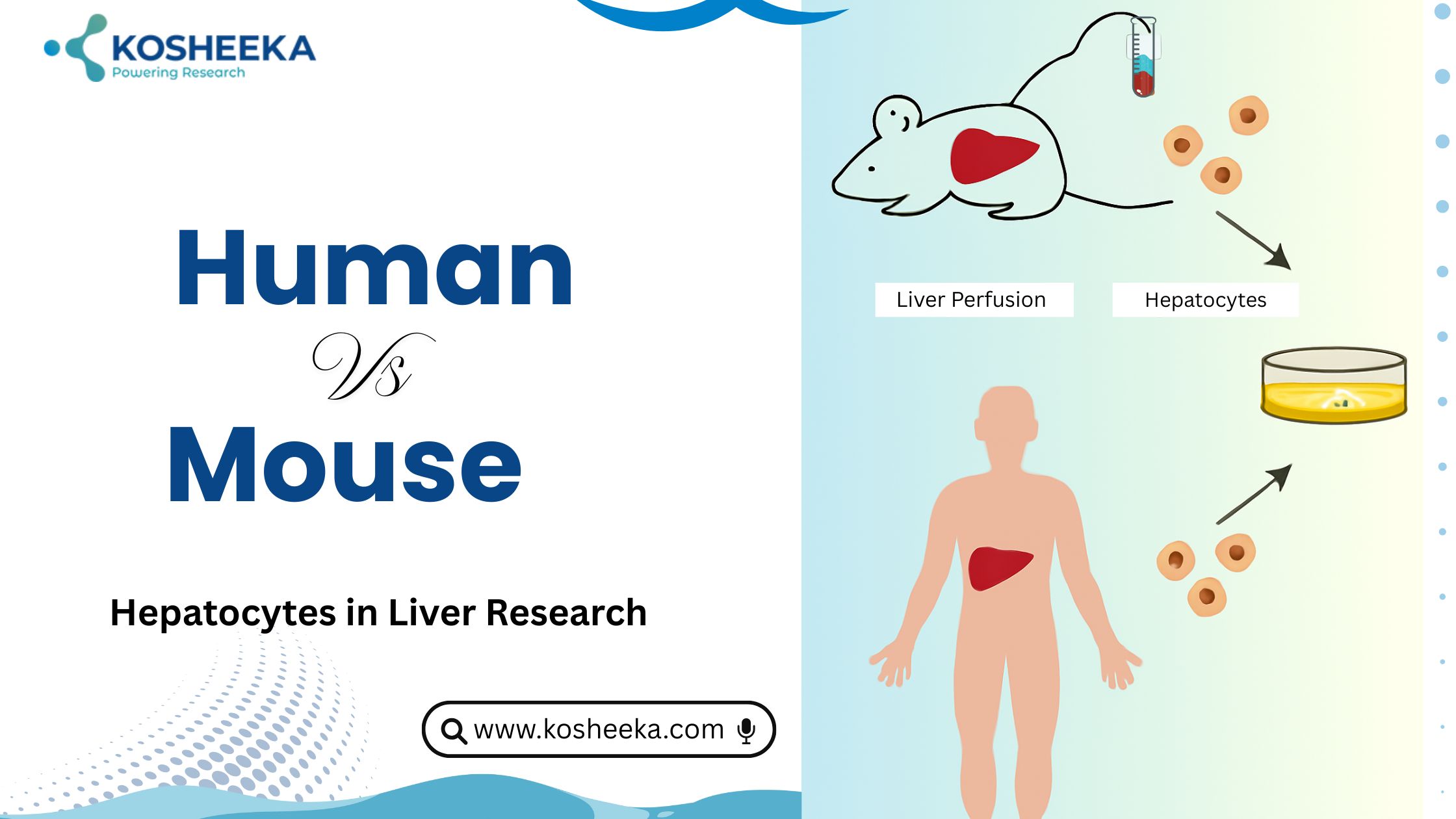Human vs Mouse Hepatocytes in Liver Research

Strong 8k brings an ultra-HD IPTV experience to your living room and your pocket.
The liver is essential for protein synthesis, drug metabolism,and bile production. The rising prevalence of liver diseases has spurred substantial research on hepatic cells. In vitro studies particularly utilize primary liver hepatocytes, the epithelial cells of liver parenchyma. They constitute 60% of the liver cell population and 80% of tissue volume. As suitable in vitro models, they have notably augmented our understanding of signaling pathways behind physiological and pathological mechanisms of the liver. However, the question arises between the application of human or Mouse Liver Hepatocytes in 2D culture systems. While Human Liver Hepatocytes have more translational relevance, using mice as standard animal models has prompted studies on mouse liver hepatocytes. This blog discusses the question and attempts to provide a suitable answer.
The Differences
Human and mouse livers share several similarities, but they also demonstrate species-specific differences.
Susceptibility to Infection: Mice exhibit different susceptibility to viral infections. Viruses require several factors from the host for their life cycle. Hepatitis B and C viruses cannot replicate in mice hepatocytes due to a lack of such factors. Although transgenic mice models have been created to study these viral infections, these models cannot recapitulate the entire life cycles of viruses.
Drug Metabolism: About 72 genes in mice and 27 genes in humans encode the cytochrome P450 enzymes involved in drug metabolism. It results in different drug metabolizing pathways in both hepatocytes.
Gene Expression: A study reported that despite similar gene expression in human and mouse hepatocytes under specific conditions, many genes have varying expressions in both species, particularly related to inflammation and metabolic functions.
Immune Response: The interspecies difference is also noticeable in the distinct repertoire of immune cells. Human livers have a predominant population of natural killer (NK) cells, whereas mouse livers have a higher percentage of NKT cells.
Gene Regulation: A transcriptomic study revealed that under similar conditions, the same genes in both species were regulated in opposite directions, significantly impacting the subsequent biological functions.
Difference in Responses: Human hepatocytes are more resistant to agonists of peroxisome proliferator-activator receptor (PPAR) than mouse cells.
Bile Acid: Human hepatocytes have a higher abundance of chenodeoxycholic acid while lacking muricholic acids than mice, thus suggesting a distinct bile acid profile in both species.
These differences have culminated in ineffective drug formulations. For example, fialuridine, an anti-hepatitis drug, didn’t show toxicity in mice but proved to be toxic in humans. Similarly, obeticholic acid decreased cholesterol in mice models but caused opposite effects in humans. Another instance is the higher resistance of mouse hepatocytes to liver damage by acetaminophen in comparison to human hepatocytes.
Mouse vs Human Hepatocytes
Besides the research application, the in vitro research depends largely on the cost and availability of cells. Mouse Liver Cells are readily available from the animal tissue in comparison to human hepatic cells. The short life span of these cells in the in vitro settings mandates repeated isolations or procurement of cells, which incur cost and time. While the 3D culture systems are changing the landscape of in vitro cultivation, the choice between the hepatocytes of the two species still dictates the research design in many laboratories.
Humanized Livers: The Answer?
Humanized livers refer to mouse livers populated with human hepatic cells. These are also called chimeric mice or xenograft models. The development of these models began almost two decades ago with the transplantation of human hepatocytes in immunodeficient mice. These models supported viral infection, which is challenging in mice. The development of chimeric livers requires immunodeficient mice with liver injury to prevent rejection of transplanted cells and allow their expansion in mouse livers, respectively. They enable disease modeling and provide a human hepatocyte population for in vitro culture.
However, the absence of an immune system in mice is a fundamental lacuna of this model. Another pitfall of this model is the presence of mouse hepatic cells along with human cells, which makes distinguishing the species-specific effects challenging. The interdonor variability of human hepatocytes and the quality control issues restrict the use of these models.
In Conclusion
Mouse and human hepatocytes share many similarities that have driven the in vitro hepatic research on these cells. Their applications include the evaluation of drug toxicity and their metabolic pathways, understanding the role of these cells in liver disorders, and analyzing the genetic and transcriptomic profiles. These studies hint towards the low translational relevance of studies on mouse cells. However, the use of mouse models and the easy availability of mouse hepatocytes propel the in vitro research on mouse cells. To resolve the dilemma between the two species, scientists have developed humanized livers that address the limitations of both cellular models.
Over time, more complex chimeric models comprising all human hepatic cells in the mouse liver have also been established. However, these models also have their own set of pros and cons. To work on either human or Mouse Liver Hepatocytes, contact Kosheeka, a reliable provider of cells and cellular products for research.
Note: IndiBlogHub features both user-submitted and editorial content. We do not verify third-party contributions. Read our Disclaimer and Privacy Policyfor details.






